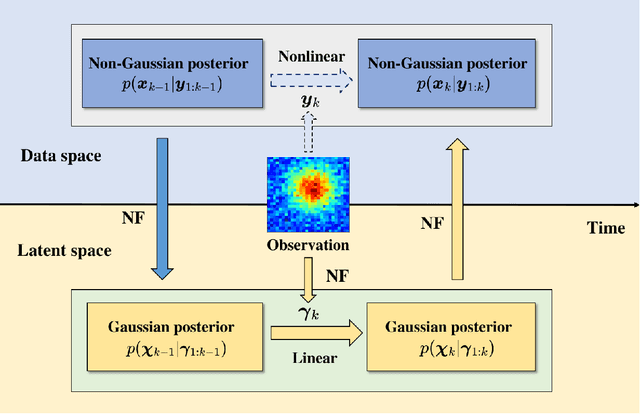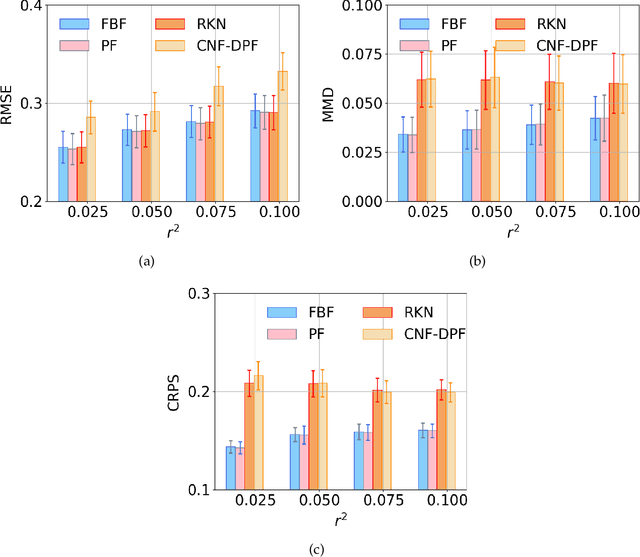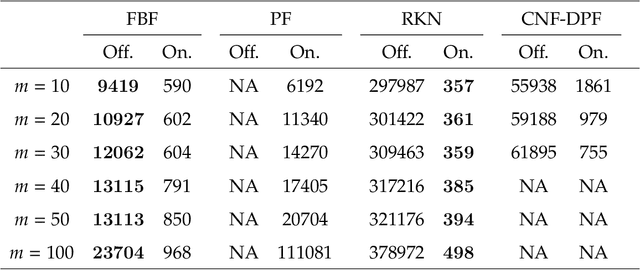Xintong Wang
Rethinking Multilingual Vision-Language Translation: Dataset, Evaluation, and Adaptation
Jun 13, 2025Abstract:Vision-Language Translation (VLT) is a challenging task that requires accurately recognizing multilingual text embedded in images and translating it into the target language with the support of visual context. While recent Large Vision-Language Models (LVLMs) have demonstrated strong multilingual and visual understanding capabilities, there is a lack of systematic evaluation and understanding of their performance on VLT. In this work, we present a comprehensive study of VLT from three key perspectives: data quality, model architecture, and evaluation metrics. (1) We identify critical limitations in existing datasets, particularly in semantic and cultural fidelity, and introduce AibTrans -- a multilingual, parallel, human-verified dataset with OCR-corrected annotations. (2) We benchmark 11 commercial LVLMs/LLMs and 6 state-of-the-art open-source models across end-to-end and cascaded architectures, revealing their OCR dependency and contrasting generation versus reasoning behaviors. (3) We propose Density-Aware Evaluation to address metric reliability issues under varying contextual complexity, introducing the DA Score as a more robust measure of translation quality. Building upon these findings, we establish a new evaluation benchmark for VLT. Notably, we observe that fine-tuning LVLMs on high-resource language pairs degrades cross-lingual performance, and we propose a balanced multilingual fine-tuning strategy that effectively adapts LVLMs to VLT without sacrificing their generalization ability.
Chinese Toxic Language Mitigation via Sentiment Polarity Consistent Rewrites
May 21, 2025Abstract:Detoxifying offensive language while preserving the speaker's original intent is a challenging yet critical goal for improving the quality of online interactions. Although large language models (LLMs) show promise in rewriting toxic content, they often default to overly polite rewrites, distorting the emotional tone and communicative intent. This problem is especially acute in Chinese, where toxicity often arises implicitly through emojis, homophones, or discourse context. We present ToxiRewriteCN, the first Chinese detoxification dataset explicitly designed to preserve sentiment polarity. The dataset comprises 1,556 carefully annotated triplets, each containing a toxic sentence, a sentiment-aligned non-toxic rewrite, and labeled toxic spans. It covers five real-world scenarios: standard expressions, emoji-induced and homophonic toxicity, as well as single-turn and multi-turn dialogues. We evaluate 17 LLMs, including commercial and open-source models with variant architectures, across four dimensions: detoxification accuracy, fluency, content preservation, and sentiment polarity. Results show that while commercial and MoE models perform best overall, all models struggle to balance safety with emotional fidelity in more subtle or context-heavy settings such as emoji, homophone, and dialogue-based inputs. We release ToxiRewriteCN to support future research on controllable, sentiment-aware detoxification for Chinese.
Prosody-Adaptable Audio Codecs for Zero-Shot Voice Conversion via In-Context Learning
May 21, 2025Abstract:Recent advances in discrete audio codecs have significantly improved speech representation modeling, while codec language models have enabled in-context learning for zero-shot speech synthesis. Inspired by this, we propose a voice conversion (VC) model within the VALLE-X framework, leveraging its strong in-context learning capabilities for speaker adaptation. To enhance prosody control, we introduce a prosody-aware audio codec encoder (PACE) module, which isolates and refines prosody from other sources, improving expressiveness and control. By integrating PACE into our VC model, we achieve greater flexibility in prosody manipulation while preserving speaker timbre. Experimental evaluation results demonstrate that our approach outperforms baseline VC systems in prosody preservation, timbre consistency, and overall naturalness, surpassing baseline VC systems.
Perception, Reason, Think, and Plan: A Survey on Large Multimodal Reasoning Models
May 08, 2025Abstract:Reasoning lies at the heart of intelligence, shaping the ability to make decisions, draw conclusions, and generalize across domains. In artificial intelligence, as systems increasingly operate in open, uncertain, and multimodal environments, reasoning becomes essential for enabling robust and adaptive behavior. Large Multimodal Reasoning Models (LMRMs) have emerged as a promising paradigm, integrating modalities such as text, images, audio, and video to support complex reasoning capabilities and aiming to achieve comprehensive perception, precise understanding, and deep reasoning. As research advances, multimodal reasoning has rapidly evolved from modular, perception-driven pipelines to unified, language-centric frameworks that offer more coherent cross-modal understanding. While instruction tuning and reinforcement learning have improved model reasoning, significant challenges remain in omni-modal generalization, reasoning depth, and agentic behavior. To address these issues, we present a comprehensive and structured survey of multimodal reasoning research, organized around a four-stage developmental roadmap that reflects the field's shifting design philosophies and emerging capabilities. First, we review early efforts based on task-specific modules, where reasoning was implicitly embedded across stages of representation, alignment, and fusion. Next, we examine recent approaches that unify reasoning into multimodal LLMs, with advances such as Multimodal Chain-of-Thought (MCoT) and multimodal reinforcement learning enabling richer and more structured reasoning chains. Finally, drawing on empirical insights from challenging benchmarks and experimental cases of OpenAI O3 and O4-mini, we discuss the conceptual direction of native large multimodal reasoning models (N-LMRMs), which aim to support scalable, agentic, and adaptive reasoning and planning in complex, real-world environments.
The Bitter Lesson Learned from 2,000+ Multilingual Benchmarks
Apr 22, 2025



Abstract:As large language models (LLMs) continue to advance in linguistic capabilities, robust multilingual evaluation has become essential for promoting equitable technological progress. This position paper examines over 2,000 multilingual (non-English) benchmarks from 148 countries, published between 2021 and 2024, to evaluate past, present, and future practices in multilingual benchmarking. Our findings reveal that, despite significant investments amounting to tens of millions of dollars, English remains significantly overrepresented in these benchmarks. Additionally, most benchmarks rely on original language content rather than translations, with the majority sourced from high-resource countries such as China, India, Germany, the UK, and the USA. Furthermore, a comparison of benchmark performance with human judgments highlights notable disparities. STEM-related tasks exhibit strong correlations with human evaluations (0.70 to 0.85), while traditional NLP tasks like question answering (e.g., XQuAD) show much weaker correlations (0.11 to 0.30). Moreover, translating English benchmarks into other languages proves insufficient, as localized benchmarks demonstrate significantly higher alignment with local human judgments (0.68) than their translated counterparts (0.47). This underscores the importance of creating culturally and linguistically tailored benchmarks rather than relying solely on translations. Through this comprehensive analysis, we highlight six key limitations in current multilingual evaluation practices, propose the guiding principles accordingly for effective multilingual benchmarking, and outline five critical research directions to drive progress in the field. Finally, we call for a global collaborative effort to develop human-aligned benchmarks that prioritize real-world applications.
DP-LET: An Efficient Spatio-Temporal Network Traffic Prediction Framework
Apr 04, 2025Abstract:Accurately predicting spatio-temporal network traffic is essential for dynamically managing computing resources in modern communication systems and minimizing energy consumption. Although spatio-temporal traffic prediction has received extensive research attention, further improvements in prediction accuracy and computational efficiency remain necessary. In particular, existing decomposition-based methods or hybrid architectures often incur heavy overhead when capturing local and global feature correlations, necessitating novel approaches that optimize accuracy and complexity. In this paper, we propose an efficient spatio-temporal network traffic prediction framework, DP-LET, which consists of a data processing module, a local feature enhancement module, and a Transformer-based prediction module. The data processing module is designed for high-efficiency denoising of network data and spatial decoupling. In contrast, the local feature enhancement module leverages multiple Temporal Convolutional Networks (TCNs) to capture fine-grained local features. Meanwhile, the prediction module utilizes a Transformer encoder to model long-term dependencies and assess feature relevance. A case study on real-world cellular traffic prediction demonstrates the practicality of DP-LET, which maintains low computational complexity while achieving state-of-the-art performance, significantly reducing MSE by 31.8% and MAE by 23.1% compared to baseline models.
Flow-based linear embedding for Bayesian filtering of nonlinear stochastic dynamical systems
Feb 22, 2025



Abstract:Bayesian filtering for high-dimensional nonlinear stochastic dynamical systems is a fundamental yet challenging problem in many fields of science and engineering. Existing methods face significant obstacles: Gaussian-based filters struggle with non-Gaussian distributions, sequential Monte Carlo methods are computationally intensive and prone to particle degeneracy in high dimensions, and deep learning approaches often fail to balance accuracy and efficiency in complex filtering tasks. To address these challenges, we propose a flow-based Bayesian filter (FBF) that integrates normalizing flows to construct a latent linear state-space model with Gaussian filtering distributions. This framework enables efficient density estimation and sampling through invertible transformations provided by normalizing flows, which can be learned directly from data, thereby eliminating the need for prior knowledge of system dynamics or observation models. Numerical experiments demonstrate the advantages of FBF in terms of both accuracy and efficiency.
Multilingual and Explainable Text Detoxification with Parallel Corpora
Dec 16, 2024Abstract:Even with various regulations in place across countries and social media platforms (Government of India, 2021; European Parliament and Council of the European Union, 2022, digital abusive speech remains a significant issue. One potential approach to address this challenge is automatic text detoxification, a text style transfer (TST) approach that transforms toxic language into a more neutral or non-toxic form. To date, the availability of parallel corpora for the text detoxification task (Logachevavet al., 2022; Atwell et al., 2022; Dementievavet al., 2024a) has proven to be crucial for state-of-the-art approaches. With this work, we extend parallel text detoxification corpus to new languages -- German, Chinese, Arabic, Hindi, and Amharic -- testing in the extensive multilingual setup TST baselines. Next, we conduct the first of its kind an automated, explainable analysis of the descriptive features of both toxic and non-toxic sentences, diving deeply into the nuances, similarities, and differences of toxicity and detoxification across 9 languages. Finally, based on the obtained insights, we experiment with a novel text detoxification method inspired by the Chain-of-Thoughts reasoning approach, enhancing the prompting process through clustering on relevant descriptive attributes.
Game-theoretic LLM: Agent Workflow for Negotiation Games
Nov 12, 2024



Abstract:This paper investigates the rationality of large language models (LLMs) in strategic decision-making contexts, specifically within the framework of game theory. We evaluate several state-of-the-art LLMs across a spectrum of complete-information and incomplete-information games. Our findings reveal that LLMs frequently deviate from rational strategies, particularly as the complexity of the game increases with larger payoff matrices or deeper sequential trees. To address these limitations, we design multiple game-theoretic workflows that guide the reasoning and decision-making processes of LLMs. These workflows aim to enhance the models' ability to compute Nash Equilibria and make rational choices, even under conditions of uncertainty and incomplete information. Experimental results demonstrate that the adoption of these workflows significantly improves the rationality and robustness of LLMs in game-theoretic tasks. Specifically, with the workflow, LLMs exhibit marked improvements in identifying optimal strategies, achieving near-optimal allocations in negotiation scenarios, and reducing susceptibility to exploitation during negotiations. Furthermore, we explore the meta-strategic considerations of whether it is rational for agents to adopt such workflows, recognizing that the decision to use or forgo the workflow constitutes a game-theoretic issue in itself. Our research contributes to a deeper understanding of LLMs' decision-making capabilities in strategic contexts and provides insights into enhancing their rationality through structured workflows. The findings have implications for the development of more robust and strategically sound AI agents capable of navigating complex interactive environments. Code and data supporting this study are available at \url{https://github.com/Wenyueh/game_theory}.
CogSteer: Cognition-Inspired Selective Layer Intervention for Efficient Semantic Steering in Large Language Models
Oct 23, 2024



Abstract:Despite their impressive capabilities, large language models (LLMs) often lack interpretability and can generate toxic content. While using LLMs as foundation models and applying semantic steering methods are widely practiced, we believe that efficient methods should be based on a thorough understanding of LLM behavior. To this end, we propose using eye movement measures to interpret LLM behavior across layers. We find that LLMs exhibit patterns similar to human gaze across layers and different layers function differently. Inspired by these findings, we introduce a heuristic steering layer selection and apply it to layer intervention methods via fine-tuning and inference. Using language toxification and detoxification as test beds, we demonstrate that our proposed CogSteer methods achieve better results in terms of toxicity scores while efficiently saving 97% of the computational resources and 60% of the training time. Our model-agnostic approach can be adopted into various LLMs, contributing to their interpretability and promoting trustworthiness for safe deployment.
 Add to Chrome
Add to Chrome Add to Firefox
Add to Firefox Add to Edge
Add to Edge